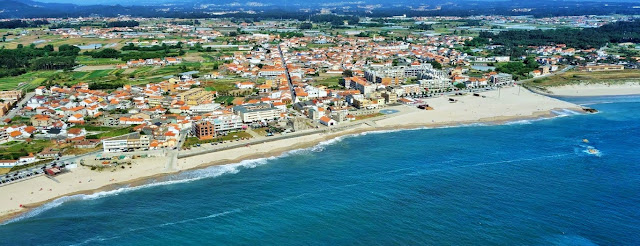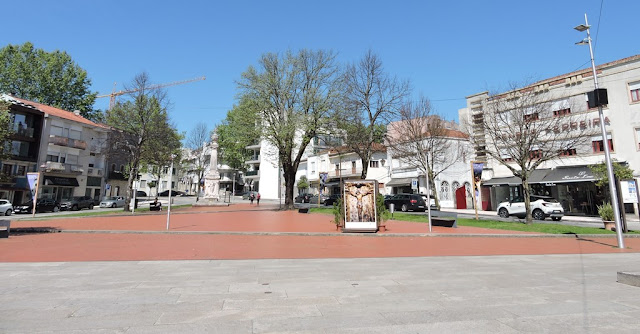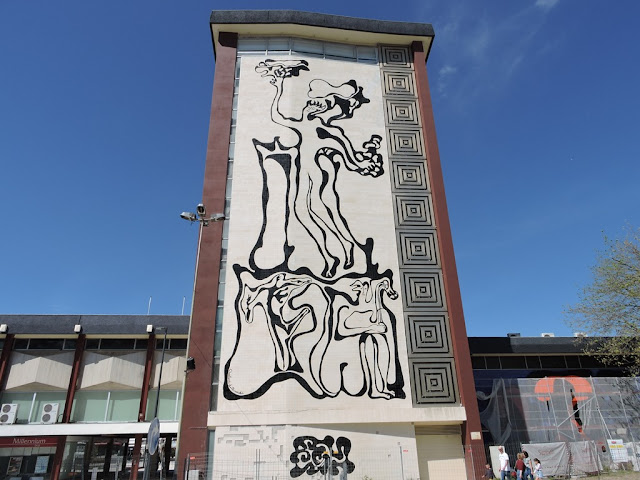VIEIRA DO MINHO
41° 38' 6.1" N; 8° 8' 30.4" W
Vieira do Minho is a Portuguese village located in the sub-region of Ave, belonging to the North region and the district of Braga.
It is the seat of the Municipality of Vieira do Minho, which has a total area of 218.05 km2, 11,955 inhabitants in 2021 and a population density of 55 inhabitants per km2, subdivided into 16 parishes:
Anissó e Soutelo; Anjos e Vilar Chão; Caniçada e Soengas; Cantelães; Eira Vedra; Guilhofrei; Louredo;
Mosteiro; Parada de Bouro; Pinheiro; Rossas; Ruivães e Campos; Salamonde; Tabuaças; Ventosa e Cova; Vieira do Minho.
The municipality is limited to the north by the municipality of Terras de Bouro, to the north and east by Montalegre, to the southeast by Cabeceiras de Basto, to the south by Fafe, to the southwest by Póvoa de Lanhoso and to the northwest by Amares.
The highest point in the municipality is located in Serra da Cabreira, more precisely in Alto do Talefe, with an altitude of 1262 meters.
The antiquity of human occupation of the lands that today make up the municipality of Vieira do Minho can be attested by the numerous archaeological testimonies that can be seen in the municipality, with particular emphasis on the Serra da Cabreira area, territory occupied since prehistory and the Salamonde and Ruivães, where the military presence of different peoples, especially the Romans, attest to the strategic value of this area in controlling the main routes of penetration into the province. The mounds, menhirs, cave engravings, medieval pits, Neolithic necropolises, Roman settlements, castros, as well as various clay, iron and other metal utensils, are examples of the region's archaeological lode, which is quite underexplored.
From Roman times, there are still traces of some sections of Via XVII of the Antonino route that connected Braga, Chaves to Astorga, and traces of ancient settlements from that era, an example of which is the settlement of São Cristovão - Ruivães
Due to its extreme importance in military strategy, the region suffered the effects of the penetration of the different peoples that invaded the peninsula, from the Swabians to the Romans, and much more recently from the Napoleonic armies. In fact, in the spring of 1809, Marshal Soult's troops crossed the county twice: the first on March 15, in an impetuous advance on the way to Braga. The second, on the 17th of May, in a hasty retreat across the Misarela bridge, on the exact day that Wellesley's Anglo-Portuguese forces arrived at the top of Salamonde, with the frustrated aim of cutting them off.
This penchant for involvement in war also determined that Vieira became involved in the liberal wars, Ruivães witnessing hard fights between liberals and absolutists, and shortly afterwards, in April 1846, Vieira became enthusiastic about the popular movement of “Maria da Fonte”. where he had his origin and where his mentor lived: Father Casimiro José Vieira.
These notes are the testimony of the history of Vieira do Minho, made more of its strategic value than of the memory of men embodied in monuments and cities.

The highest point in the municipality is located in Serra da Cabreira, more precisely in Alto do Talefe, with an altitude of 1262 meters.
The antiquity of human occupation of the lands that today make up the municipality of Vieira do Minho can be attested by the numerous archaeological testimonies that can be seen in the municipality, with particular emphasis on the Serra da Cabreira area, territory occupied since prehistory and the Salamonde and Ruivães, where the military presence of different peoples, especially the Romans, attest to the strategic value of this area in controlling the main routes of penetration into the province. The mounds, menhirs, cave engravings, medieval pits, Neolithic necropolises, Roman settlements, castros, as well as various clay, iron and other metal utensils, are examples of the region's archaeological lode, which is quite underexplored.
From Roman times, there are still traces of some sections of Via XVII of the Antonino route that connected Braga, Chaves to Astorga, and traces of ancient settlements from that era, an example of which is the settlement of São Cristovão - Ruivães
Due to its extreme importance in military strategy, the region suffered the effects of the penetration of the different peoples that invaded the peninsula, from the Swabians to the Romans, and much more recently from the Napoleonic armies. In fact, in the spring of 1809, Marshal Soult's troops crossed the county twice: the first on March 15, in an impetuous advance on the way to Braga. The second, on the 17th of May, in a hasty retreat across the Misarela bridge, on the exact day that Wellesley's Anglo-Portuguese forces arrived at the top of Salamonde, with the frustrated aim of cutting them off.
This penchant for involvement in war also determined that Vieira became involved in the liberal wars, Ruivães witnessing hard fights between liberals and absolutists, and shortly afterwards, in April 1846, Vieira became enthusiastic about the popular movement of “Maria da Fonte”. where he had his origin and where his mentor lived: Father Casimiro José Vieira.
These notes are the testimony of the history of Vieira do Minho, made more of its strategic value than of the memory of men embodied in monuments and cities.
💓💓💓💓💓
GO BACK TO THE SEARCH IN
THE DISTRICT OF BRAGA


























































































